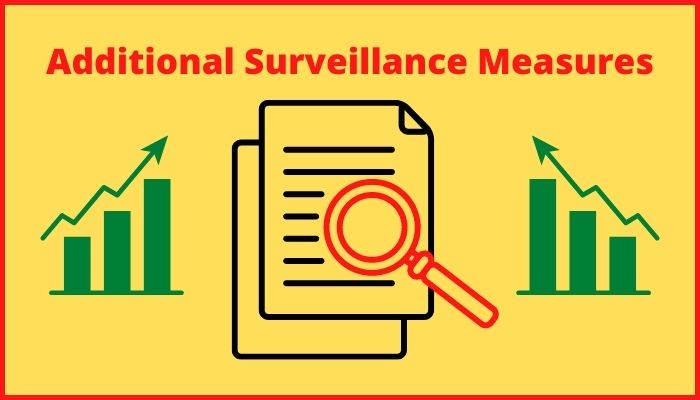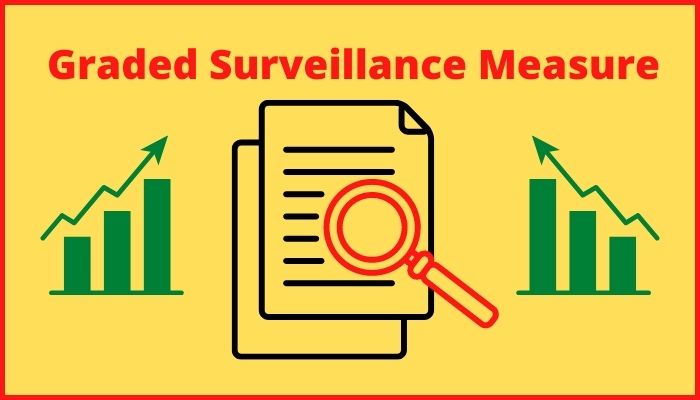GSM (Graded surveillance measure) Does it sound like a kind of mobile sim card to you? It is a monitoring strategy that Securities and Exchange Board of India (SEBI) has introduced to protect the interests of genuine investors. The BSE has approximately 900 firms that are tracked by the market regulator SEBI, known as the GSM Category list.
Table of Contents
What is Graded Surveillance Measure?
A graded surveillance measure is a way to keep an eye on unrealistic prices and an unexpected increase in demand of a firm’s shares that aren’t in line with the situation of the company’s financial performance and stability.
The mechanism classifies companies into different grades in order to alert investors to potential stock-price manipulation. The warning goes on when the regulator notices unusual stock price fluctuations that might place the firm in the category of “shell companies.” Investors can discover which shares to avoid in this manner.
Ankit Metal & Power Limited, Balkrishna Paper Mills Limited and Cox & Kings Limited are some of the examples of GSM category stocks.
GSM Category Status
In its ability as an industry watchdog SEBI (Securities and Exchange Board of India) implements a number of surveillance measures in order to enhance the market’s credibility and performance while also protecting investors’ interests.
To combat unethical practises, SEBI implements price band reductions, periodic call auctions, and the transition of stocks to the Trade to Trade section.
How Graded Surveillance Measure Works?

When the SEBI detects an unusual rise in a firm ‘s share price it may issue a warning to the exchange. It may be a case of market rigging if the stock price rises significantly without being backed by the firm ‘s financial performance or fundamentals. It’s likely that these businesses are being utilized for money laundering.
In such situations, SEBI will issue a warning to the exchange to keep an eye on market activity or indeed order the trading of the firm ‘s stocks to be halted. When a firm ‘s stock is placed on a watch list, it alerts investors to exercise extra caution while trading in these securities.
Levels of Graded Surveillance Measure
The process of moving shares to the list of “shell firms” consists of 6 levels:
First Level
The shares are first put under Trade to Trade supervision, which prohibits all types of speculative trading and enables only regulated delivery of equities in exchange for a required payment of consideration. Only a 5% change in the stock price is allowed at this time.
Second Level
When stocks approach the second level, buyers must pay a surveillance deposit of 100 percent of the trade value for at least 5 months.
Third Level
On the third Level trading in the stock is restricted to once a week as well as they need to give 100 percent of the trade volume as a deposit.
Fourth Level
Price freezing on the higher end of trading in Stock and they need to give 200 percent of the trade volume as a deposit
Fifth Level
Any other monitoring measure considered necessary in the context of market credibility and they need to give 200 percent of the trade volume as a deposit.
Sixth Level
The sixth stage is the most restrictive, with trading permitted only once a month and no price change upwards.
Shortlisting of Stocks

The following are the detailed conditions for shortlisting and reviewing stocks under the GSM Guideline:
Criteria I:
For stocks to be included in the GSM Framework, the following requirements must be met.
1. Shares with a current Net Worth of less than or equivalent to Rs. 10 crores (Share Capital + Reserves & Surplus – debit balance in P&L);
And
2. Shares with Net Fixed Assets (Tangible Assets + Capital Work in Progress) of less than or equivalent to Rs. 25 crores as of the most recent available data;
And
3. Stocks with a price-to-earnings ratio greater than 2 times the benchmark index (Nifty 500) OR a negative price-to-earnings ratio.
Criteria II:
For securities to be included specifically under GSM – Stage I, the following conditions must be met.
1) Shares with a market capitalization of less than Rs. 25 crore in their entirety;
and
2) Stocks with a price-to-earnings ratio greater than two times that of the benchmark index (Nifty 500);
OR
3) When it comes to shares with a negative PE, keep the following in mind:
The stock’s P/B (Price to Book) value is higher than or equal to 2 times the P/B value of the Benchmark Index (Nifty 500) OR the P/B value is negative.
Stocks Excluded from process from securities under GSM
- Equities under which the price discovery has not yet occurred.
- Shares that are already halted to trade.
- Stocks that are included in the derivative section.
- Shares that are part of a stock exchange index (such as the NSE or BSE).
- If accessible, Public Sector Enterprises and their subsidiaries.
- Stocks listed via Initial Public Offerings (IPOs) in the previous year.
- Equities that have paid a dividend each of the previous three years.
- Shares with an institutional ownership of more than 10% and must meet the additional necessary criteria.
- Shares listed in the last year through a Scheme of Arrangement including a Merger or Demerger.
Stocks in the Graded Surveillance Measure
SEBI implemented graded surveillance measures in February 2020, and nearly 900 companies have been added to the GSM list since then. So, what exactly does this imply? Do the shares stay on the list indefinitely?
Not all of the time. SEBI reviews stocks periodically in a year and, based on the outcome, removes them from the GSM list. There are also guidelines for a quarterly assessment, in which firms in upper levels are moved down to a reduced tier.
It is possible for a firm to question its place on the GSM list. They have the ability to appeal SEBI’s (or a bourse’s) judgment to the Securities Appellate Tribunal or the Supreme Court. SEBI will lift all trading restrictions if the firm wins.
gsm stock list
You can find the list of GSM Category stocks on below links:

Conclusion
In the stock market, GSM serves as a buffer, separating good stocks from bad. There are newspaper notifications and updates on the BSE and NSE platforms when a firm’s shares are put under surveillance. However, since these announcements are always sudden and unexpected, you might not have a sufficient chance to quit the trade.
This is all from our side regarding GSM List. Let us know your views about gsm stock list in the comment section.
Other Interesting blogs related to gsm category stocks list.
Additional Surveillance Measures
Security is not Allowed to Trade in This Market
FAQ Reagrding GSM Category Stocks List
Graded Surveillance Measure in hindi
एक श्रेणीबद्ध निगरानी उपाय अवास्तविक कीमत और फर्म के शेयर की मांग में अप्रत्याशित वृद्धि पर नजर रखने का एक तरीका है जो कंपनी के वित्तीय प्रदर्शन और स्थिरता की स्थिति के अनुरूप नहीं है।
GSM stock list ?
GSM stock list can be found on NSE and BSE. There is also links available in this article.
ASM GSM list meaning
ASM GSM list means the list of stocks under Surveillance Measures.
ASM Full Form
ASM - Additional Surveillance Measures.
GSM Full form in stock market?
GSM - Graded Surveillance Measures.

